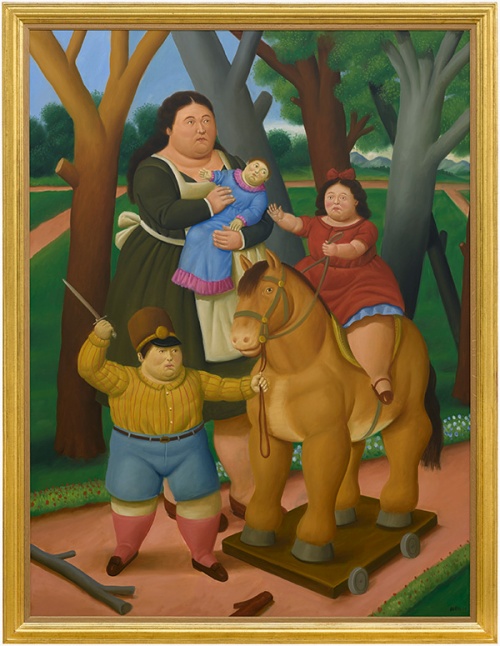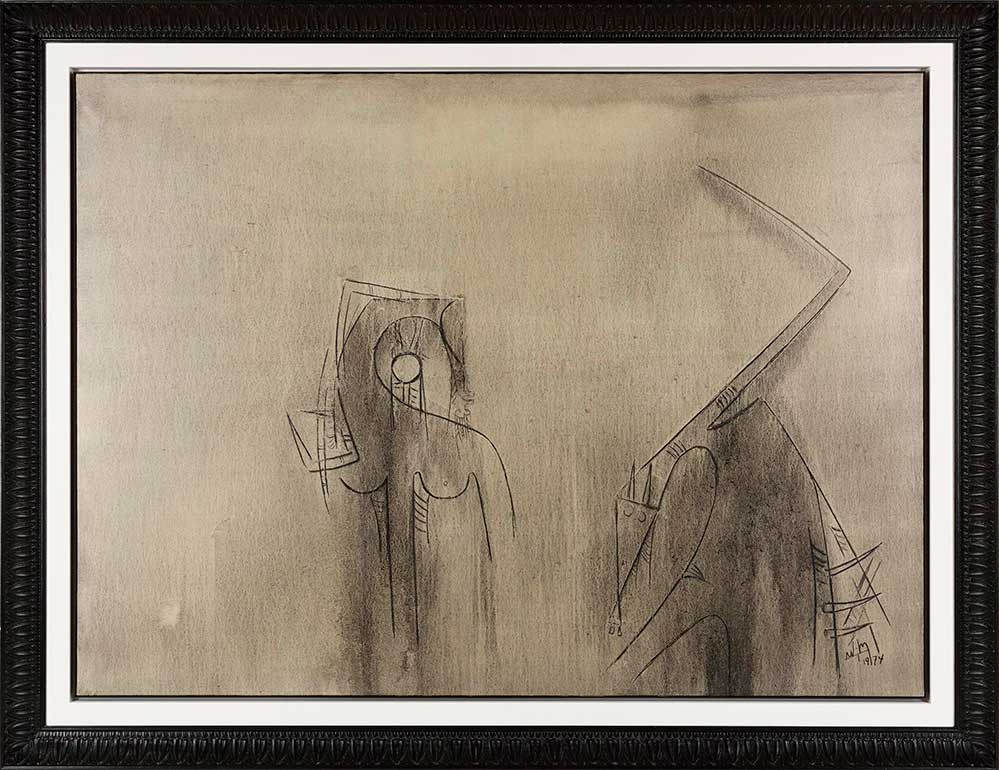In conversation with Galerie Gmurzynska's Mathias Rastorfer at Art Basel in Hong Kong
Mar 23, 2016

Three hours after the opening of Art Basel in Hong Kong 2016, #legend spoke with the debonair and flamboyant Mathias Rastorfer – CEO of Switzerland-based Galerie Gmurzynska, and member of the Art Basel Committee for the selection of Modern Art – about the state of contemporary Chinese art, transforming global art fair strategies, the limitations of auction houses, and the likelihood of Hong Kong artists having their global moment
What’s the current mood in the art word, and at Galerie Gmurzynska, here at Art Basel in Hong Kong 2016?
As I’m part of the committee here for the modern, I’m very happy with how the modern has developed, because it looks much cleaner, there’s more serious art, it has better galleries. All together, I think the mood, the seriousness has increased and that’s for sure a good thing. But, the world out there has not increased in mood, it has decreased in mood, so we have to somehow reconcile that. The solution to that, for me, is to go back to seriousness and substance, and we chose mainly three artists, Fernando Botero, Pablo Picasso and Wifredo Lam. They are artists that are proven, that are not overpriced. Picasso, strangely enough, is not overpriced. He is in the top league, for sure, and certain paintings will sell for the highest price, but on average Picasso, compared to let’s say, Jean-Michel Basquiat or Jeff Koons, or others, is reasonably priced or correctly priced. Botero has always resisted a strong increase in his prices, he has always kept prices at a level that was below US$1.5 million, and Lam is on its way to develop. So all three are historically proven artists at a price that is reasonable, or correct, and it has proven so far to be a good decision. We’ve sold three Botero’s already and I’m in the process of selling a Lam as we speak.
Read: Wifredo Lam: The Modernist master is set for a heroic return
Contemporary Chinese art was the big theme last year. Is it still?
On one hand, I think Chinese galleries are doing an increasingly great job, but, can I just back up for a second? The reception of the art world and the art market and the high prices comes mainly from the auction houses. When you’re on the up, then the auction houses are on a roll because they live on the fact that things are on the up. When things become a bit more complicated, they are not the people to turn to because they don’t function very well in that situation. Galleries and art fairs function very differently. Galleries representing artists think long-term and are not that cyclical. The Chinese galleries, particularly the good ones who are on this committee develop serious Chinese collectors. As soon as you start to do that, you develop artists, you do your job, and you have a market that is not necessarily the auction market. Sometimes young artists are sort of ruined when that happens too early for them. And then the gallery is left either picking up the pieces or the artist abandons it because he can’t keep up with it. And this is what has happened in the contemporary art world. Cycles have become so short. For example, a 25-year-old artist’s prices over a year and a half may have increased from the 100s, 200s, 500s up to a million, and in less than half a year go down again to 200. So that kind of, the last one who was bitten by the dogs, has bitten away literally from the credibility of the art world, and this is what we are trying to counter.
So that’s why the Chinese contemporary market from that point of view, with the galleries developing their market carefully, and for collectors, is doing relatively well. As a matter of fact, even in crisis time I was told those galleries are continuing well. The speculative Chinese, which was mainly bought by Westerners for a long time, not so.

Which galleries would you single out, as doing a good job when it comes to China?
Younger galleries, lesser known names. I think it’s a general trend right now that contemporary galleries are moving more and more towards the modern again, because some of the very contemporary is slowing down, and that is true for the speculative Chinese contemporary art as well. When you look at the report from TEFAF, there is supposedly about a 7 per cent decrease in sales, and I think that’s a very healthy situation. You also have to bear in mind that we have had years of dramatic growth. Suddenly having a 7 per cent correction is a very good thing. And so, I reckon that’s about correct.
What do you think is the immediate future for Chinese art?
Look at the serious galleries. Shy away from the ‘over a million dollars’ situation of a lot of the contemporary. I don’t think that’s sustainable. A little bit like their Western counterparts, when you have a studio of 50 helpers, and you have developed a trademark style that is getting repeated, that is not something of a long-term project. That is taking the market as long as it goes up. I would stay away from that and certainly look for serious galleries that have shown a track record over a period of time to show at real art fairs, and to show artists that they have carried for a number of years.
Hong Kong art and its artists. Are they about to have a moment. We’re getting this feeling from feedback?
One thing that has certainly happened is that Hong Kong became more culturally interested and diversified over the last five years. That’s undeniable. I’ve heard from some Western galleries, the young contemporary galleries, that they are interested in coming to experimental spaces with local artists because they feel something. So, I guess there is something in the air, I don’t feel it’s quite there yet, and it’s probably not as tangible to people like you and me, but some of the younger colleagues that I have seem to feel that way. And in a way, it could be. It could be that on a theoretical level, there is a hunger. And as long as you have a hunger in these kinds of fields, as they had in England which has gone, as they had in New York, which has gone, we now have this potential new frontier. How good is what comes out of that and how long it will have energy is still to be seen, but obviously I think there is something in the making.
Are you surprised to see Sotheby’s first street art exhibition in HK now in 2016?
Frankly nothing surprises me when it comes to Sotheby’s. I think the problem is they’ve lost a little bit their direction, and their leadership and their footing in the art world, and if you want to top Christie’s super concept of mixed sales, why not? But honestly I think 2016 is not going to be the year for auctions as it used to be. I also think you will find a much-needed reduction of volume. If that doesn’t happen then it’s certainly something catastrophic for them, and also for others, so, one really hopes that there’s someone somewhere who understands where the limits are.

Christie’s selling Modigliani recently for US$170.4 million. What does that tell us about the art market?
It’s a little bit like the skyscraper index. People say the higher the statute the more the country’s in trouble. It’s a little bit of that. Everybody looks to set the highest possible record at auction then you have an overheated situation for sure. Is it worth it? This is the problem when you have certain works of art that I think are priceless. That is really the issue. So whatever someone’s willing to pay is obviously what the price is, but ultimately, it’s priceless, and that’s true for certain works. Not for many. But certain works.
Hong Kong. Should it develop like Miami and have parallel/satellite fairs supporting Basel? Is that a helpful or necessary art ecosystem for the city?
Well I think it’s a very different situation. You can’t compare Miami and Basel and Hong Kong. First of all, Hong Kong is an island, a tiny little overpopulated island where basically the driving force is commerce, trade, business; not leisure, not culture and not anything frivolous. Miami of course is very different. It’s a vacation destination, combined with tax benefits. I think Hong Kong has, in an amazingly short amount of time through Art Basel, proved itself as the hub for Asia, much more than Singapore. Culturally, from an art fair perspective, it’s not Shanghai, it’s not Singapore, it doesn’t have that magic, but through Art Basel, for a short time, it becomes a place where everybody meets, a bit like a festival. It has made its mark and has left its mark. I don’t think you need 15 satellite fairs either. You cannot possibly do this, costs are outrageous, timing is not possible. The whole busy, busy thing about Hong Kong prevents it. But, nonetheless, I think the cultural impact has been tremendous.
Adrian Cheng told #legend exclusively last week that he envisages using islands to supplement Art Basel in Hong Kong – a sort of island biennale or triennale. What do you think?
But why? I think we have too many art fairs as it is. You will see certainly a reduction of art fairs in the near future. You will see Art Basel announcing maybe tomorrow that they are also doing regional fairs, not as Art Basel, but regional fairs organised by the mother ship, and that’s exactly the trend. You have a few opinion-making leaders in the business, which are musts to show up, and as a gallerist, if you’re not part of it you’re no longer part of the club. And then there are these other places where people don’t travel as much but there’s a lot of money and a lot of interest and people feel marginalized, so therefore, if someone with some clout can say, ‘Okay, we’ll give you a regional fair,’ it becomes a breeding ground for collectors and other galleries to shape themselves and over the years develop and become part of bigger art fairs. I think this is a concept that will be tested out in the next few years.





























